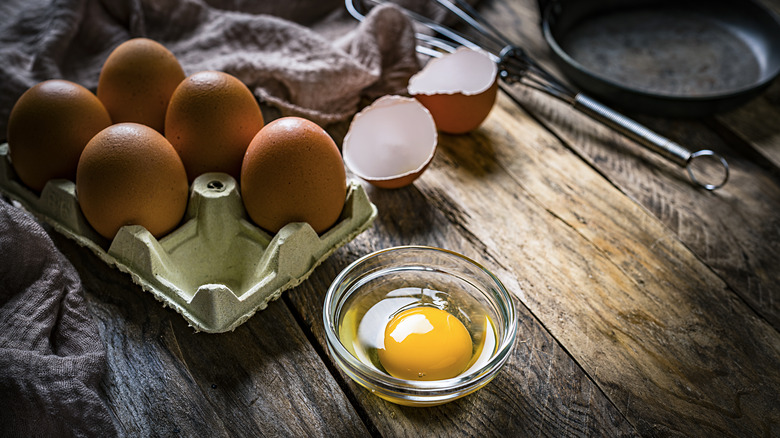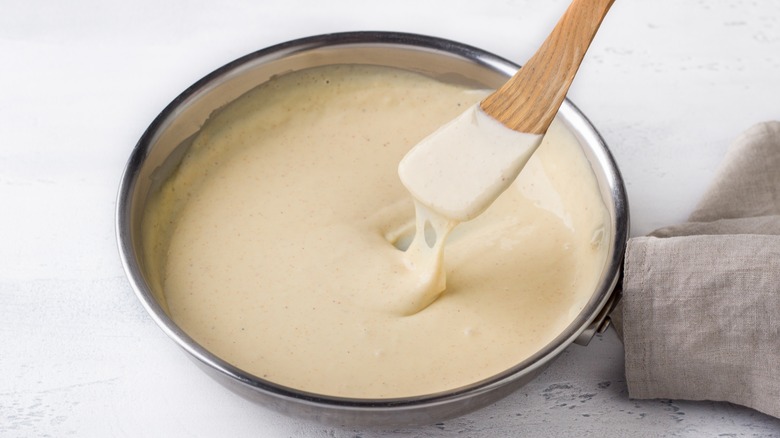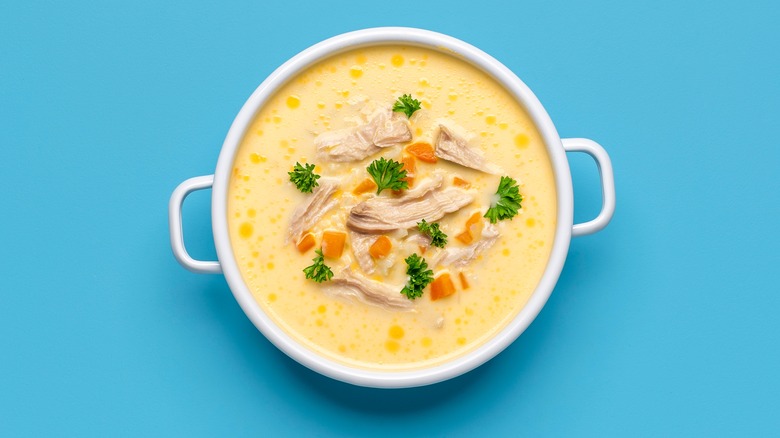Eggs Are Your Secret Weapon For Creamy Pan Sauce Without Dairy
A runny yolk or soft egg can elevate pared-down meals into a deluxe dish. But rather than keeping the fat and flavor of the ingredient separate, chefs often merge the transformative topping right into the meal. Egg is a culinary secret weapon because, with a dose of heat, it can help bind and fill out thin mixtures.
Yolk, specifically, is known for its emulsifying properties, which give pan sauces their thick, glossy texture. That golden nugget in the middle of your egg contains lecithin, which helps catch and hold together fat and water, otherwise known as an emulsion. This helps sauces hold together, adding creaminess and encouraging it to cling to the rest of your meal, rather than separating into greasy blobs.
One place where eggs truly shine is in a pan sauce — where the flavors of seared meats, caramelized vegetables, and flavorful liquids marry into a savory jus. Cooks often turn to dairy to add body and round out the blend, but if you haven't made it to the store or avoid lactose, this move is out of the question. Eggs offer a satisfying alternative.
Adding raw eggs to a pan sauce
Depending on how many you're serving, we'd recommend adding one to two eggs to your sauce toward the end of cooking. You can use the whole thing or just the yolk. Yolks bring the heavy, rich flavor, but might solidify too much if you're hoping for a sauce that can drape over a large quantity of food. To add whites and yolks, make sure to whisk them together before mixing them with your sauce.
Using the long-lasting protein might intimidate cooks who fear undercooking or producing the dreaded scramble. Not to worry — just borrow a technique from baking. Temper eggs by introducing a small amount of hot liquid to the raw egg and mixing vigorously. This will help dilute the protein and bring it up to temperature before you slowly combine it with the rest of your piping hot sauce. This is a helpful skill to know when making custards and can encourage a viscous, velvety texture.
If tempering isn't your thing, you can carefully add the egg directly to your pan sauce, making sure the yolk slowly warms. Otherwise, take the extra step of stirring and reheating the mixture over a burner after it's blended. Remember that egg mixtures should reach a temperature of 160 degrees Fahrenheit, according to the USDA. As you stir, you'll notice the glossy texture and thickening effect of the egg.
Sauces and soups that are better with an egg
Don't stop at pan sauces. Look to the Italian classic, a Roman-style spaghetti alla carbonara, for inspiration, as this creamy, egg-centric dish famously needs no heavy cream. Other starches benefit from the same treatment in Japan, tamago kake gohan, where seasoned rice is dressed with a yolk.
Even starchy meals that do contain emulsifiers like dairy or a flour-based roux can benefit from the enriching power of an egg. Take macaroni and cheese. A homemade sauce, with the addition of two of the farm-fresh ingredients, can transform into a strong coating of decadent cheesy flavor. And you can tap into the power of pasta water to thin the mixture as needed.
Soups also benefit from a dose of the tempered thickener. You can skip the heavy cream and add eggs to everything from thin vegetable broth to hearty minestrone for a richer texture. This is a great addition to a pantry meal, like brothy beans or dried ramen, and to bulk up watery stews, just as you would a pan sauce. And with the addition of lemon, you can test out transforming chicken soup into a warming and simple Greek avgolemono.



